A circuit breaker is an electrical safety apparatus that protects a circuit from damage caused by an overcurrent or short circuit. The most common cause of a tripping circuit breaker is when too much electricity flows through it or when the circuit cannot handle the overload. When a circuit breaker trips, it cuts the flow of electricity to prevent further damage. Without a circuit breaker, many homes would be at higher risk of fires and dangers.
If your circuit breaker keeps tripping, the first thing you need to do is to locate it. Once you’ve done that, we will walk you through a few steps to stop your power from tripping.
How to stop your power from tripping
Don’t overload the circuit.
One of the easiest ways to stop your power from tripping is to make sure you’re not overloading a circuit. Ensure the electrical load in your office and home is split between multiple outlets; don’t plug a dozen appliances into one extension cord; spread them evenly. Doing this means each circuit breaker does not have to bear a full current load.
If your power keeps tripping, there is a good chance that the circuit breaker is overloaded. This problem often happens in the kitchen as appliances like the oven, microwave, refrigerator, kettle, and other electric devices may all be turned on and used simultaneously, drawing a tremendous amount of current through just one circuit breaker. Poor bugger!
Replace old electrical components
As components grow older, they begin to provide more electrical resistance, which is usually compensated for by the circuit drawing more current. However, when drawing more current, a circuit generates more heat, which leads to the circuit breaker activating and shutting off your power, which in turn may lead to the risk of fire or injury.
If you think you are not overloading the circuit breaker, the issue may be due to the age of the breaker itself or due to the age of your electrical devices. Be sure to replace all of your electrical components regularly to avoid any issues, as not only will they keep tripping your power, but they can also be a health and safety hazard. Maintaining your switchboard is a crucial part of safe and effective electrical maintenance.
Overloaded power board
A lot of what we use at home nowadays depends on electricity. However, power boards are needed in homes and workplaces without enough outlets for the cords and wires.
With everyday use, an electrical outlet should hold a maximum of two plugs, but with power boards, one outlet can power multiple inputs, and it can often get out of hand. A power board sounds almost too good to be true since you can plug in all your devices; however, it can be dangerous if the power board is overloaded. An overloaded power board can damage your devices, cause fires, and trip your circuit breaker. Therefore, you must understand what to do when using power boards to protect your workers, family, and all other electrical appliances. To guarantee that you’re using your powerboard efficiently and safely, here are a few more tips to avoid issues:
Avoid the piggyback method
The piggyback method refers to the overloading of the power board by plugging one powerboard into and connecting it to another. It can be dangerous to do this and should be avoided. You should also try not to turn a single outlet into a double outlet through a double adaptor, as this could lead to a fire. Instead, avoid using an additional cord or double adaptor and utilise the power board as you should.
Power boards with overload protection are the best
The overload protection feature does what it says on the tin; it stops electricity from overloading the power board and keeps you safe if an overload occurs. Therefore, you should absolutely spend that little bit extra and purchase a power board with an overload protection feature to avoid any possible hazards down the road. Electrical maintenance is something you should not take lightly.
Avoid plugging high-wattage appliances into power boards
Common high-wattage appliances include heaters, TVs, kettles, washing machines, etc. These require more electrical power than most home appliances and devices. Most power boards are not designed to work with these appliances. Plug any of these devices into the outlet directly.
How to reset your circuit breaker
To reset it yourself, all you need to do is make sure the breaker is completely off and then turn it back on – being careful not to shock yourself. If it keeps tripping, you need to refer to our common problems mentioned above before trying again. Resetting the circuit breaker is a valuable way to determine what may be causing your current predicament, as it won’t work until the issue is remedied. Electrical fault finding is a tricky but necessary undertaking; sometimes, it is wise to call a professional if the problem persists.
Why you should choose IPA Solutions for all your commercial electrical needs
Collectively, our team of commercial electricians at Industrial Power and Automation has more than 30 years’ collective experience working in the electrical industry.
Local electrician, Nick Stewart, started IPA as his own business in 2016 after experiencing a wide variety of work during his time as an electrical employee.
Starting his career working in both the residential and commercial market, Nick established relationships with clients and other industry professionals and moved his focus to where he was passionate – the industrial and commercial electrical sectors.
At IPA, we pride ourselves on our excellent customer service and are committed to providing Australia’s best electrical service and maintenance. We focus on understanding your specific needs and delivering comprehensive electrical solutions to meet your commercial or industrial requirements.
Contact us today for all your commercial and industrial electrical needs.









